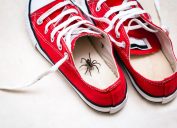7 Places Black Widows Spiders Are Hiding in Your Home
These venomous spiders could be making themselves comfortable in certain parts of your house.

Even people who don't consider themselves arachnophobes likely have a healthy fear of black widow spiders. Not only does research indicate that these venomous arachnids have an ever-widening habitat in the United States, but their bites can also cause severe health complications including vomiting, chest pain, and in rare cases, even death.
According to researchers at The Brooklyn Hospital Center, St. Luke's University Health Network, and Temple University's Lewis Katz School of Medicine, black widow encounters tend to peak in late summer and early fall—and those unexpected pests are being found inside homes more frequently than you might expect. Read on to discover where pest experts say you're most likely to encounter a black widow in your home and how to protect yourself and your space.
RELATED: "Very Large" New Spider Species Discovered—Here's Where There May Be Hiding.
1
Sheds
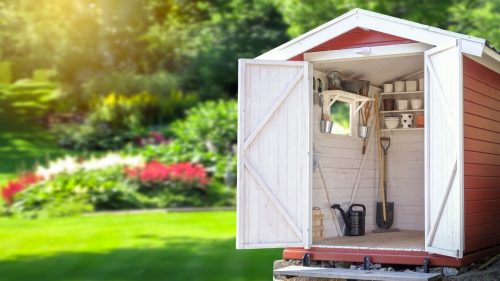
Black widows tend to take up residence in sheltered spots outside of the home.
"These spiders are web-builders, so they typically harbor in areas where they can make their webs without interruption," says Emma Grace Crumbley, an entomologist for Mosquito Squad. The webs are built closer to the ground, and sheds are not only cool but easily accessible for these critters.
Crumbley adds that black widows harbor in shoes, clothes, gloves, or waders that are not regularly worn. Typically items like these are stored in sheds, so it's likely that more spiders could be seeking refuge there.
RELATED: 8 Foods That Are Attracting Mice Inside Your Home.
2
Gutter Downspout

A lot of black widows reside under porches or decks because the area is typically hidden and undisturbed. However, Matt Smith, owner and licensed professional pest control technician at Green Pest Management, always advises checking under the gutter splash block/pan, since black widows love cool, damp, and dark places.
"The gutter downspouts are very protected, and that is where the food source is," says Smith. He recommends not reaching under gutter splash pans when you need to empty them.
RELATED: 6 Places Mosquitoes Are Thriving in Your House.
3
Wood piles

That stack of firewood in your living room may look charming and help warm your house. Unfortunately, it may also be providing a safe haven where black widows can go unnoticed, explains Tom Mascari, PhD, an expert entomologist at SC Johnson.
In fact, seeing black widows in your wood pile may indicate that there's yet another pest camping out in your space. "Black widow spiders prey upon insects and other spiders, so if you find them in your home, it may be a sign that there are other insects present," Mascari says.
RELATED: 9 Cleaning Habits That Are Attracting Spiders to Your Home.
4
Crawl spaces
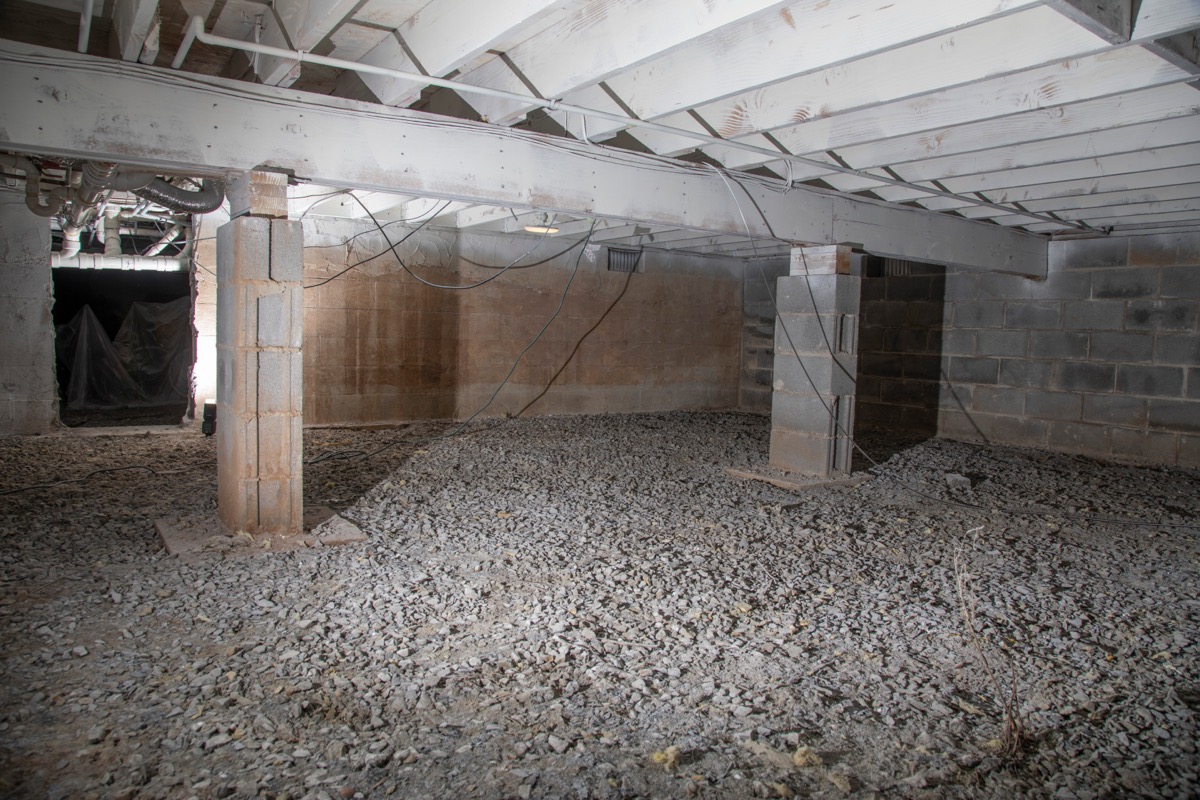
Before you pull out your outdoor furniture or tools from your crawl space, you may want to don some protective gear first.
"You may encounter black widow spiders in dark, sheltered, undisturbed places in and around your home such as crawl spaces," says Mascari. He explains that black widows may hide in boxes, so it's best to inspect any containers carefully before plunging your hands in.
RELATED: Invasive Spiders With 3-Foot Webs Are Spreading and Can't Be Stopped.
5
Basements
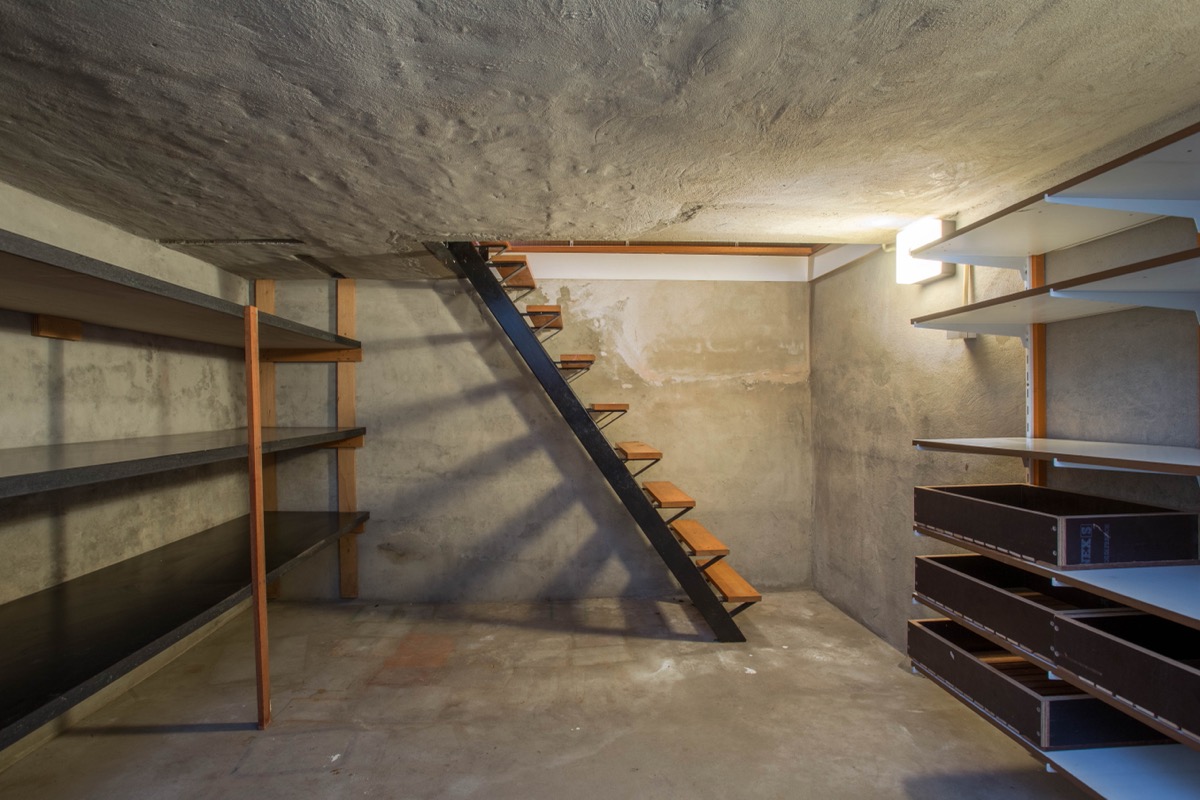
If you're clearing clutter from your basement this fall, you may want to be extra careful, as black widows tend to thrive in these low-traffic areas.
"Just like outside, where they try to find places they won't be disturbed, inside they are found in seldom-used areas such as basements," says Michael Thome, an associate certified entomologist and technical service manager for Ehrlich Pest Control.
Thome says that keeping clutter at bay is a great way to limit black widows' ability to take up residence in your home, but notes that if you do notice a problem, it's best to call in a pro to handle it. If you move items in a potentially infested area, Thome recommends wearing work gloves to avoid being bitten.
RELATED: 6 Ways to Spider-Proof Your Basement, According to Experts.
6
Attics
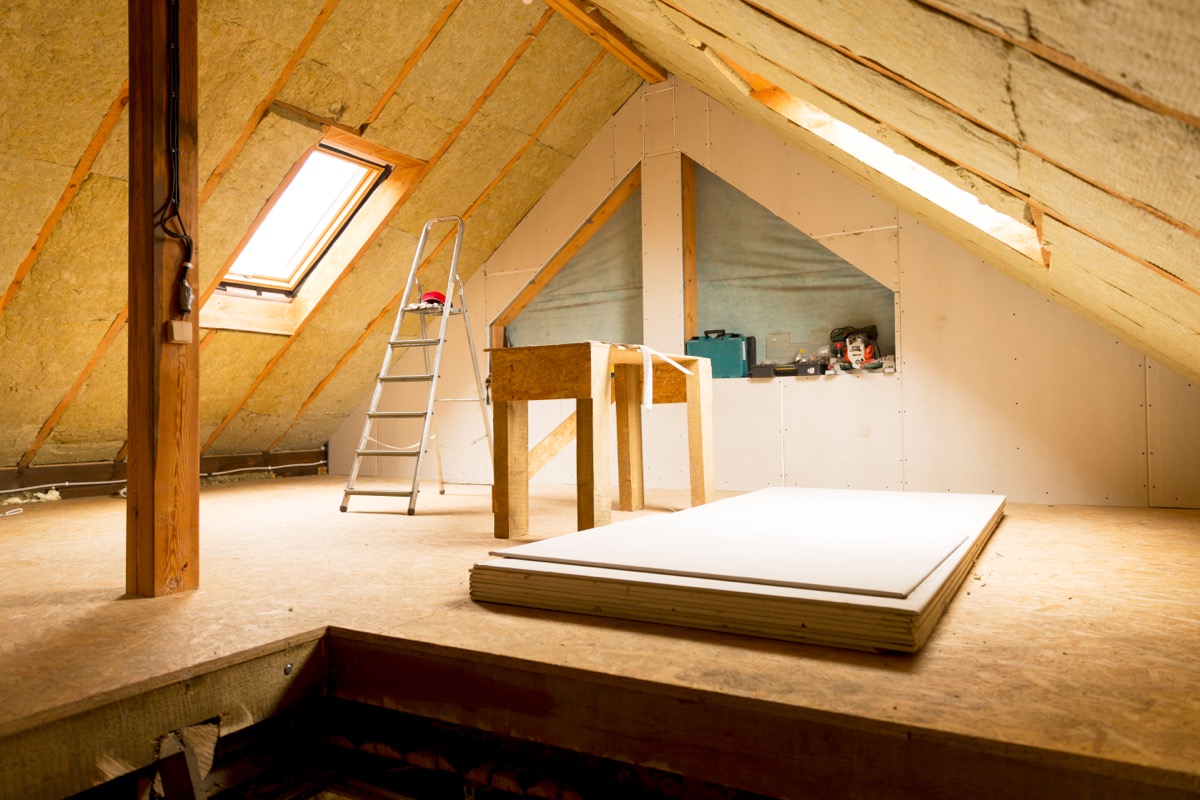
That rarely-used attic can quickly become a comfortable space for black widows to call home. Like basements, this is an area that tends to be packed with unused items.
"Cluttered and poorly ventilated storage areas are more likely to be home to their preferred prey," explains Jordan Foster, a pest management expert at Fantastic Pest Control, noting that dark and dry environments, like attics, are prime territory for these pests.
RELATED: Tarantula Sightings in Homes Are on the Rise: "Everyone's Freaking Out."
7
Garages

Your garage is the perfect place to protect your car from the elements—and it's also a pretty ideal habitat for black widows.
"We often find black widows in garages," says Charles Lang, a senior pest control technician with Debug Pest Control of Rhode Island. "They especially love to spin webs and nest near the garage doors where they can capture and eat small insects entering the garage."
Similar to basements and attics, clearing out clutter is a simple first step toward reducing the likelihood of a problem.
For more pest advice delivered to your inbox, sign up for our daily newsletter.
